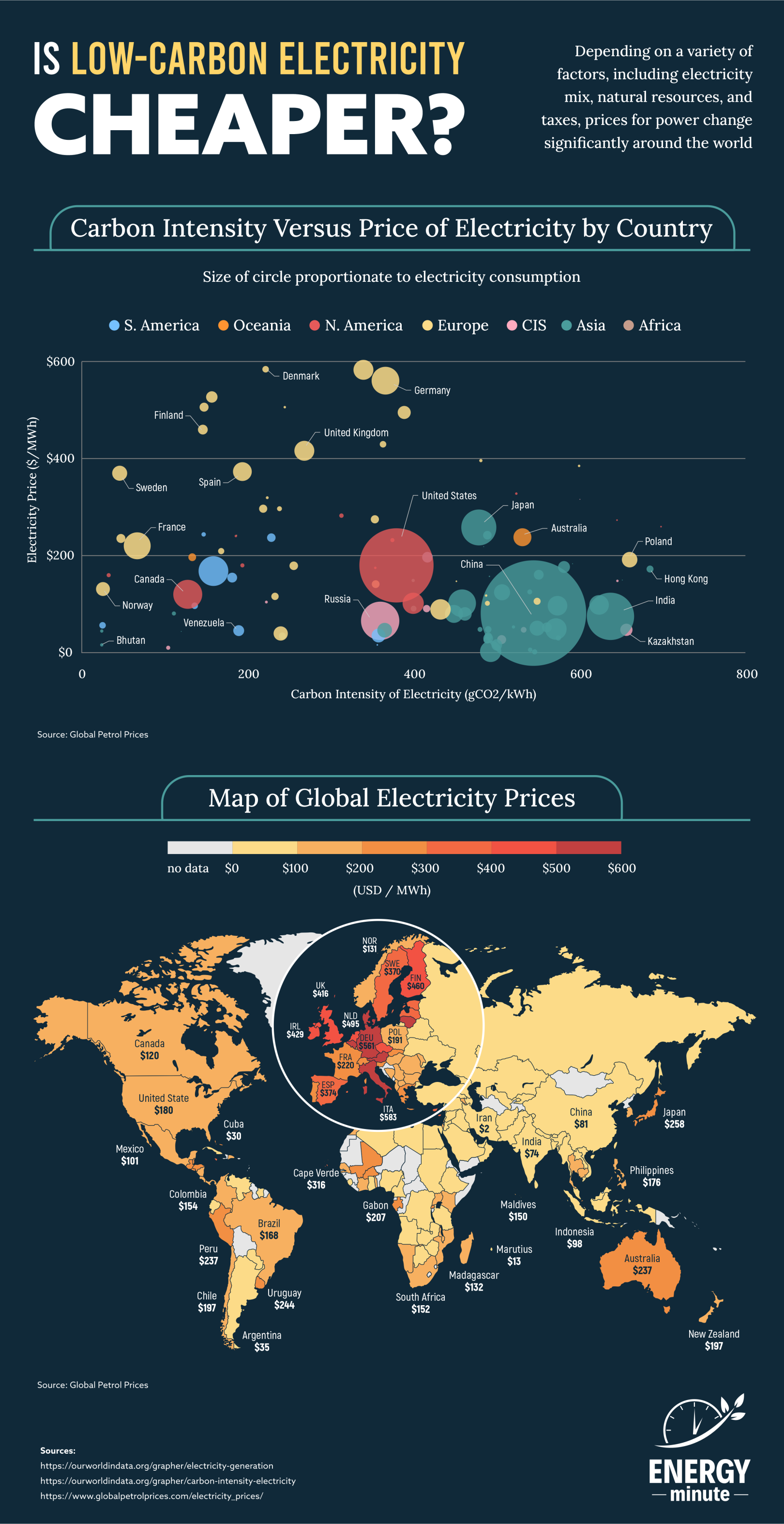Is Low-carbon Electricity Cheaper?
Original chart idea from Thunder Said Energy

The relationship between carbon intensity and price
The relationship between the carbon intensity of electricity and its price can vary depending on a range of factors, including regional energy markets, government policies, and the availability of renewable energy sources. Generally, there are a few key aspects to consider:
- Carbon-Intensive Electricity: Electricity generated from carbon-intensive sources, such as coal or natural gas, tends to have higher carbon emissions per unit of energy produced. These sources often involve higher production costs, which can influence electricity prices. If a region relies heavily on carbon-intensive electricity generation, the prices may reflect the cost of extracting, processing, and burning fossil fuels, including any associated carbon taxes or emissions trading schemes.
- Renewable Energy: As the share of renewable energy in the electricity mix increases, the carbon intensity tends to decrease. Renewable sources like solar, wind, hydro, and geothermal energy produce electricity with minimal or zero carbon emissions. However, the initial costs of establishing renewable infrastructure can be high, impacting the price of electricity until these investments are recouped.
- Government Policies and Regulations: Government policies and regulations can play a significant role in shaping the relationship between carbon intensity and electricity prices. Measures such as carbon pricing mechanisms (e.g., carbon taxes or emissions trading systems) can increase the cost of carbon-intensive electricity, incentivizing the transition to cleaner energy sources. Subsidies or incentives for renewable energy can help drive down the prices of low-carbon electricity.
- Market Dynamics: Supply and demand dynamics in the electricity market also influence prices. Factors such as fuel costs, transmission and distribution infrastructure, maintenance expenses, and market competition can impact the overall electricity price. Changes in the carbon intensity of electricity generation can affect the cost structure, particularly when transitioning from high-carbon to low-carbon sources.
It’s important to note that the relationship between carbon intensity and electricity prices is complex and can vary across regions. Transitioning to cleaner energy sources can initially result in higher electricity prices due to the costs associated with renewable energy infrastructure. However, in the long term, as technology advances and economies of scale are achieved, the costs of low-carbon electricity generation are likely to decrease, making it more competitive and potentially leading to lower prices.
Sources:
https://ourworldindata.org/grapher/electricity-generation
https://ourworldindata.org/grapher/carbon-intensity-electricity




